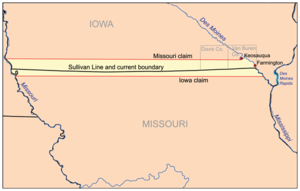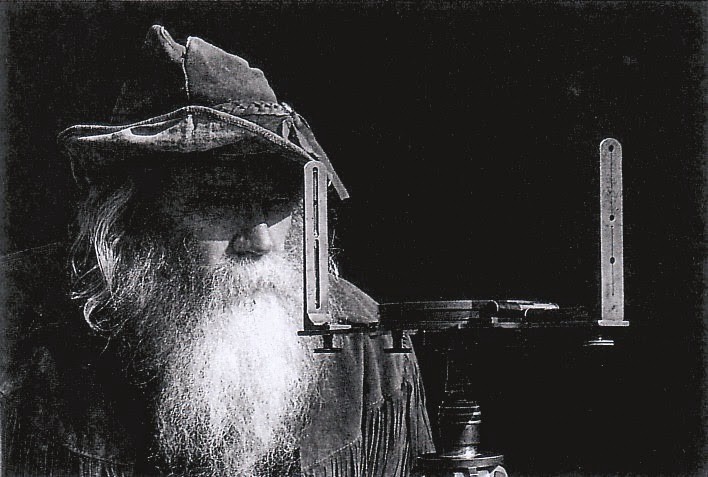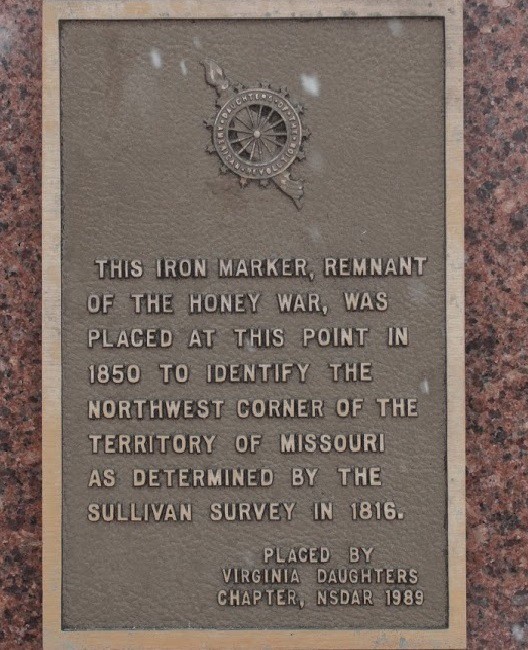Encyclopedia Dubuque
"Encyclopedia Dubuque is the online authority for all things Dubuque, written by the people who know the city best.”
Marshall Cohen—researcher and producer, CNN
Affiliated with the Local History Network of the State Historical Society of Iowa, and the Iowa Museum Association.
HONEY WAR: Difference between revisions
No edit summary |
No edit summary |
||
| Line 11: | Line 11: | ||
Iowa troops, including some from Dubuque, marched off to war not realizing it had been stopped. Confused and angry, the troops milled around southern Iowa until they received word to disband. One report stated several troops "executed" a cow so that they could at least return home with their guns fired. Another story involved a deer. The "soldiers" divided the deer in half and hung the carcasses from a tree. The halves were labeled Gov. Boggs and Gov. Lucas and were used for target practice. (2) | Iowa troops, including some from Dubuque, marched off to war not realizing it had been stopped. Confused and angry, the troops milled around southern Iowa until they received word to disband. One report stated several troops "executed" a cow so that they could at least return home with their guns fired. Another story involved a deer. The "soldiers" divided the deer in half and hung the carcasses from a tree. The halves were labeled Gov. Boggs and Gov. Lucas and were used for target practice. (2) | ||
[[File:plaque. | [[File:plaque.jpeg|200px|thumb|left|A plaque stands next to the Missouri marker placed by Sullivan near Sheridan, Mo.]]Another group, organized north of Dubuque, stormed south only to become hopelessly lost. After several days of seeking directions, they quietly returned home. In its decision, the Supreme Court upheld Iowa’s claim to the contested region. | ||
--- | --- | ||
Revision as of 15:37, 19 July 2022
HONEY WAR. A 1839 boundary dispute between Iowa and Missouri in 1839 nearly led to hostilities. Two different surveys were made of the boundary line.
In 1816 the Sullivan Line, established by surveyor J.C. Sullivan marked Native American territory. The 100-mile straight line was the accepted boundary in 1821 between the new state of Missouri and the Michigan Territory, which included the land that would become the state of Iowa.
No one disputed the line until 1837 when new Missouri settlers discovered the rich land and the honey trees in a strip of timber north of the Sullivan Line — in what is now southern Davis and Van Buren counties.When Iowa became a U.S. territory in 1838, Congress decreed that President Martin Van Buren would appoint three commissioners — from Missouri, the Iowa Territory and the United States — to survey and mark the boundary between the two states. Albert M. Lea, a soldier and engineer, represented the United States. Dr. James Davis was appointed for the Iowa Territory. Missouri's Gov. Lilburn Boggs declined to appoint a commissioner. (1)
Arguments concerning the boundary line between the state of Missouri and Territory of Iowa led to flaring tempers as a Missouri sheriff attempted to collect taxes from settlers who believed they lived in Iowa. This was followed by an unknown person, presumed to be a Missouri settler, vandalizing several trees in the region in which bees had built honeycombs. Honey, used as a sweetener on the frontier, was a valuable commodity. When a Missouri sheriff again attempted to collect taxes, he was arrested by an Iowa sheriff and the "war" began. Missouri militiamen rushed into service. Governor Lucas of Iowa found himself with twelve hundred Iowa farmers and businessmen eager for battle.
Believing that action was being taken in haste, Iowa legislators, with their Missouri counterparts, arranged for the United States Supreme Court to settle the matter. Missouri then disbanded its troops.
Iowa troops, including some from Dubuque, marched off to war not realizing it had been stopped. Confused and angry, the troops milled around southern Iowa until they received word to disband. One report stated several troops "executed" a cow so that they could at least return home with their guns fired. Another story involved a deer. The "soldiers" divided the deer in half and hung the carcasses from a tree. The halves were labeled Gov. Boggs and Gov. Lucas and were used for target practice. (2)
Another group, organized north of Dubuque, stormed south only to become hopelessly lost. After several days of seeking directions, they quietly returned home. In its decision, the Supreme Court upheld Iowa’s claim to the contested region.
---
Source:
1. "Time Machine: The Honey War, When Iowa and Missouri Almost Came to Blows Over the Border," https://www.thegazette.com/history/time-machine-the-honey-war-when-iowa-and-missouri-almost-came-to-blows-over-the-border/
2. Graham, Jed, "“Death to the Pukes!” — The Honey War of 1839," Online: https://historyofyesterday.com/death-to-the-pukes-the-honey-war-of-1839-1ab44cda4141




